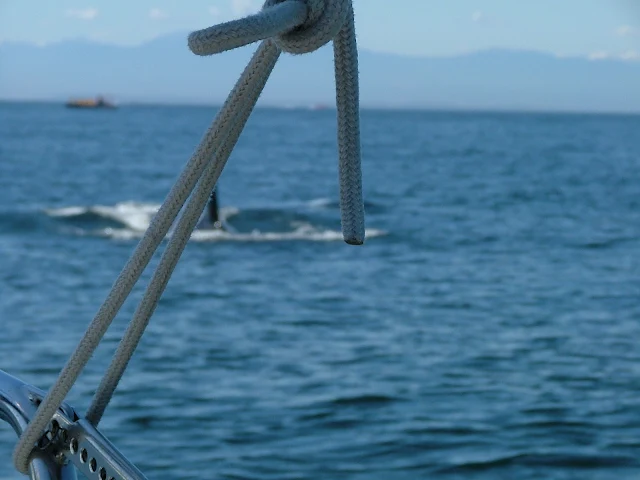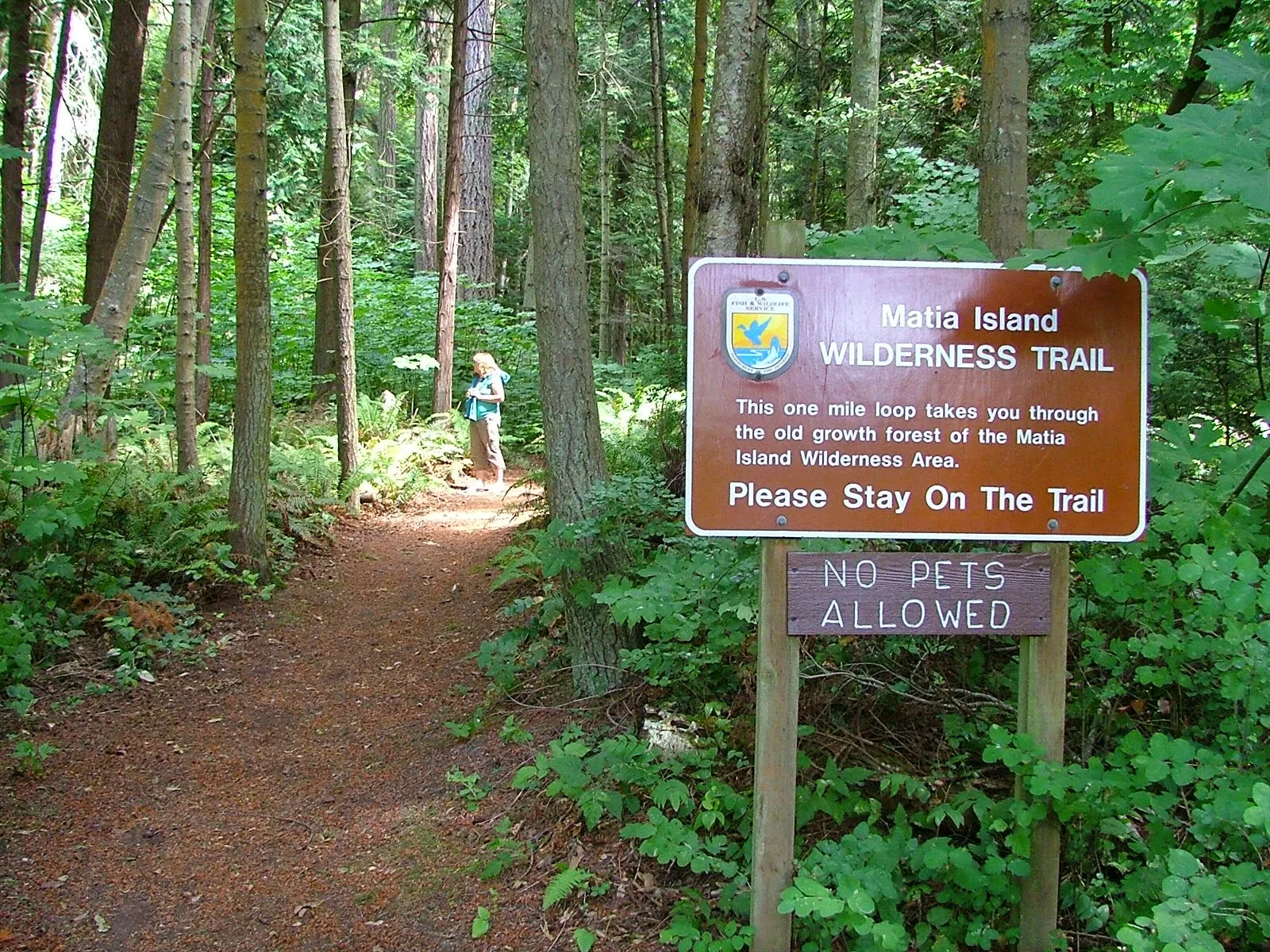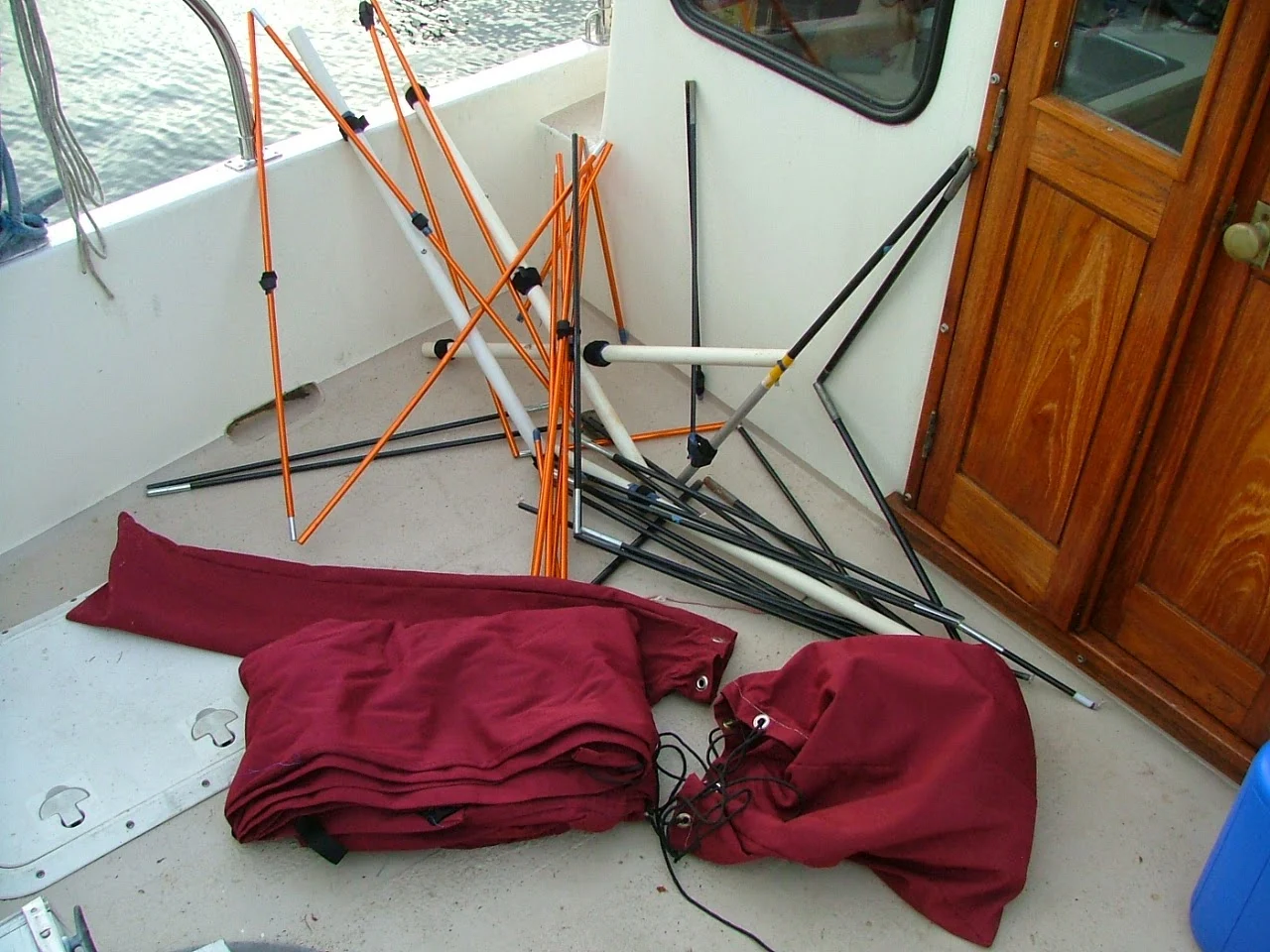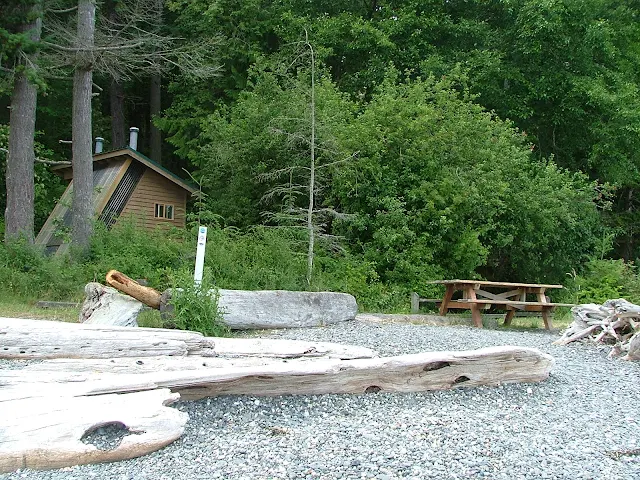Fear not! You can get in plenty of trouble interfering with any marine mammal you choose. So even if you miss out on the orca sighting of a lifetime, you still have a chance at getting a big fine levied on you for messing with their smaller cousins.
With just a little online research, I came up with these rules. Keep in mind that new regulations and changes to existing laws happen all the time, and my interpretation is likely flawed.
You know of course that you are not allowed to bring your boat closer than 200 yards (that's about the length of two football fields end to end) of a southern resident whale. Which begs the question, how does one know if it's a resident, let alone from the south? What I knew once, but forgot, was that you are required to put your transmission in neutral if you find your self inside the 200 yd limit.
You are not allowed to position your boat, (and this includes kayaks, rafts, dinghy's, etc.) so that you intersect with a whale coming towards you. The rule is 400 yards ( that's about a quarter mile )
So if I understand correctly, when whale watching, you can hang around as long as you're two football fields away, but if they come at you because you cleverly set it up by getting in their way, you may get a $1,025 fine. Plus you may unwittingly get yourself in trouble for not putting the motor in neutral when they approach closer than 200 yards. So all you kayakers, lift your paddles I guess.
This means you are not supposed to turn tail and run away when you get too close, but stay put in neutral until the Orca has swam outside the 200 yard radius. This sounds silly at first, but I think the logic is that others may be nearby that you can't see, and your spinning prop is a danger to them.
Now for seals or any cute marine mammals: It's not legal to feed, harass, handle, jeer, taunt, or make fun of them, and this includes lost or abandoned pups. Fines may reach $11,000, jail time, and losing the boat. Ouch.
My last words of warning: Enforcement or compliance is a subjective thing, this means you might disagree with the grounds for your citation.
To be safe, keep back a fair distance, and don't feed the non-human animals that hang around your boat.
Happy whale watching!
and for gosh sakes, have some fun!
BTW. We have seen large groups of Orcas in Rosario Strait off of James Island, and in Haro Strait off of Lime Kiln, which tells me they circle the San Juan's.


























